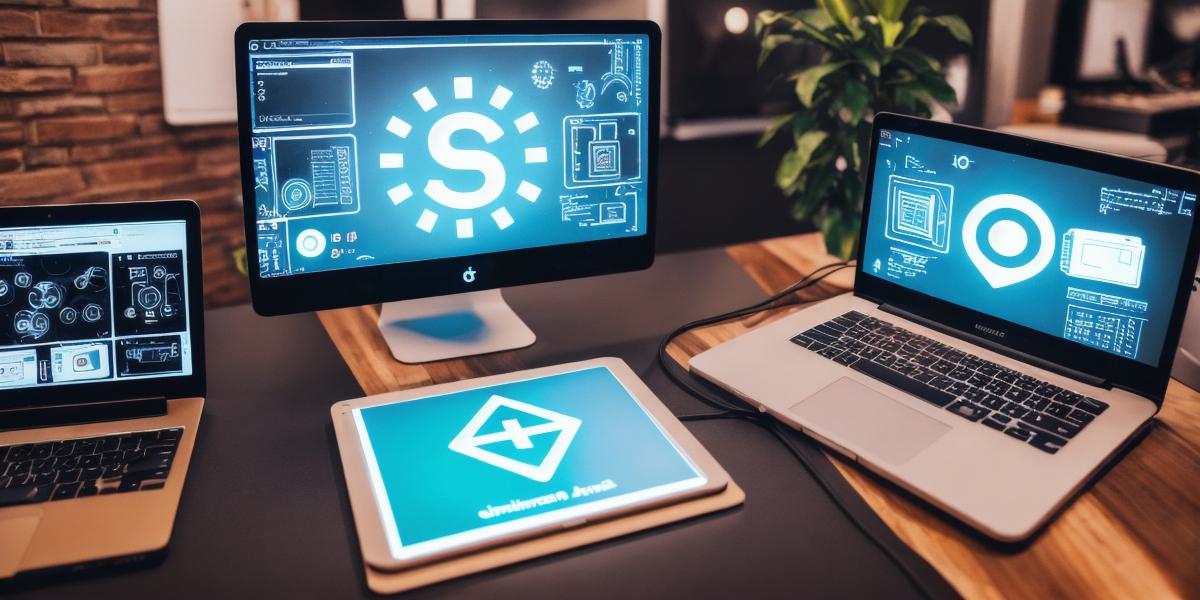Game development is a complex process that involves various stages, from conceptualization and prototyping to testing and deployment. With the advent of artificial intelligence (AI), game developers have access to new tools and technologies that can help them create more immersive, engaging, and realistic games. In this comprehensive guide, we will explore some of the best AI tools for game development and how they can be used to enhance the gaming experience.
Understanding AI in Game Development
AI is a rapidly evolving field that has the potential to revolutionize the way games are created and played. AI technology enables game developers to create intelligent non-player characters (NPCs), virtual assistants, and other interactive elements that can learn, adapt, and respond to player actions in real-time. This makes games more dynamic, challenging, and engaging for players.
AI tools for game development can be categorized into several categories, including:
- NPC and Character AI
2.Procedural Generation
3.
Machine Learning
4.
Game Optimization
- Virtual Assistants

- Natural Language Processing (NLP)
- Computer Vision
Each of these categories has its own unique set of tools and technologies that can be used to create more immersive and engaging games. In the next sections, we will explore some of the best AI tools for game development in each of these categories.
NPC and Character AI
NPCs are non-player characters that interact with players in the game world. These characters can be anything from shopkeepers to soldiers to villains. NPC and character AI is a crucial aspect of game development, as it enables developers to create intelligent, realistic, and engaging characters that players will want to interact with.
Some of the best AI tools for NPC and character development include:
- Unity AI 2D and 3D
Unity AI 2D and 3D are powerful AI tools that allow developers to create intelligent NPCs, enemies, and other interactive elements in their games. These tools enable developers to create complex behaviors such as pathfinding, navigation, and decision-making, which can make NPCs more realistic and engaging for players. - Havok Animation 3D
Havok Animation 3D is a powerful AI tool that allows developers to create highly animated and realistic characters in their games. This tool enables developers to create complex animations such as facial expressions, lip-syncing, and other interactive elements that can make characters more engaging for players.
- Behavior Trees
Behavior trees are a type of AI technology that enable developers to create intelligent NPCs by defining complex behaviors in a tree-like structure. This makes it easier for developers to create NPCs with specific goals, motivations, and personalities. - Dialogue Systems
Dialogue systems are AI tools that enable developers to create realistic conversations between characters in their games. These tools allow developers to create branching dialogue trees, which enable NPCs to respond differently depending on the player’s actions and choices. - Procedural Animation
Procedural animation is a type of animation that generates animations on-the-fly based on the character’s movements and actions. This technology can be used to create more realistic and dynamic animations for NPCs and characters in games.
Procedural Generation
Procedural generation is a powerful AI tool that enables developers to generate game content such as levels, objects, and enemies on-the-fly. This technology has the potential to revolutionize the way games are created by enabling developers to create virtually infinite variations of game content without having to manually create each element.
Some of the best AI tools for procedural generation include:
- Perlin Noise
Perlin noise is a type of algorithm that generates realistic and natural-looking textures and patterns. This technology can be used to create procedurally generated terrain, objects, and other game elements. - Procedural Mesh Generation
Procedural mesh generation is an AI tool that enables developers to generate 3D meshes on-the-fly based on the character’s movements and actions. This technology can be used to create more dynamic and realistic animations for NPCs and characters in games. - Level Design Tools
Level design tools are AI tools that enable developers to generate game levels on-the-fly. These tools use algorithms to create procedurally generated levels that are optimized for performance and realism. - Game Content Creation Platforms
Game content creation platforms are a type of software that enables developers to create game content such as characters, levels, and objects using AI tools. These platforms make it easier for developers to create high-quality game content without having to manually create each element. - Procedural Audio Generation
Procedural audio generation is an AI tool that enables developers to generate realistic and dynamic sound effects on-the-fly based on the character’s actions and movements. This technology can be used to create more immersive and engaging game sounds.
Machine Learning
Machine learning is a type of AI technology that enables computers to learn from data and improve their performance over time. In game development, machine learning can be used to create intelligent NPCs, enemies, and other interactive elements that can adapt and respond to player actions in real-time.
Some of the best AI tools for machine learning in game development include:
- TensorFlow
TensorFlow is an open-source platform for machine learning that enables developers to create intelligent NPCs and enemies that can learn from player actions and adapt their behavior accordingly. - DeepMind
DeepMind is a type of AI technology that uses deep neural networks to enable computers to perform complex tasks such as image recognition, speech recognition, and natural language processing. This technology can be used to create intelligent NPCs and enemies that can understand and respond to player actions in real-time. - Reinforcement Learning
Reinforcement learning is a type of machine learning that enables computers to learn by interacting with their environment. In game development, reinforcement learning can be used to create NPCs and enemies that can adapt their behavior based on player actions and feedback. - Natural Language Processing (NLP)
NLP is an AI technology that enables computers to understand and interpret human language. This technology can be used to create NPCs and characters that can understand and respond to player actions in real-time. - Deep Learning-Based Animation
Deep learning-based animation is a type of machine learning that enables computers to generate realistic animations based on data sets. This technology can be used to create more dynamic and realistic animations for NPCs and characters in games.
Game Optimization
Game optimization is an important aspect of game development, as it enables developers to ensure that their games run smoothly and efficiently on various hardware configurations. AI tools can be used to optimize game performance by analyzing player behavior and adjusting game settings accordingly.
Some of the best AI tools for game optimization include:
- Profiling Tools
Profiling tools are AI-based software that enables developers to analyze game performance and identify bottlenecks. These tools can be used to optimize game settings such as texture quality, lighting, and particle effects to improve performance on various hardware configurations. - Dynamic Resolution Scaling
Dynamic resolution scaling is a type of optimization technique that adjusts the game’s graphics quality based on the player’s hardware configuration. This technology can be used to ensure that games run smoothly on low-end systems while maintaining high-quality visuals on high-end systems. - Predictive Coding
Predictive coding is a type of AI-based optimization technique that predicts player actions and preloads game content accordingly. This technology can be used to reduce loading times and improve game performance by ensuring that players have access to the necessary resources before they need them. - Game Engine Optimization
Game engine optimization is an important aspect of game development, as it enables developers to ensure that their games run smoothly on various hardware configurations. AI tools can be used to optimize game engines by analyzing player behavior and adjusting game settings accordingly. - Load Time Compression
Load time compression is a type of optimization technique that reduces the amount of data that needs to be transferred during load times. This technology can be used to reduce loading times and improve game performance on various hardware configurations.
Conclusion
AI tools have the potential to revolutionize game development by enabling developers to create more realistic, dynamic, and engaging games. In this article, we have discussed some of the best AI tools for game development, including procedural generation, machine learning, natural language processing, game optimization, and predictive coding. By using these tools, developers can create high-quality games that are optimized for performance and realism, while also providing players with a more immersive and engaging experience.



